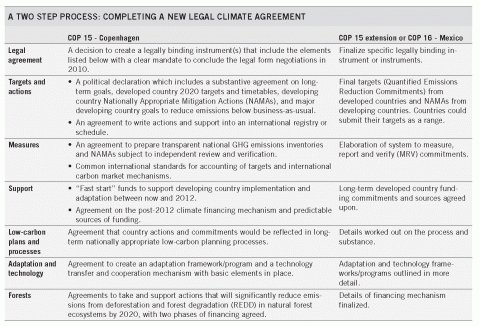In December 2009, twenty thousand people, including about 40 heads of state, will converge in Copenhagen to decide how the world responds to escalating climate change over the next half century.
If successful, the meeting of 192 member countries of the UN Framework Convention on Climate Change (UNFCCC) will send a clear signal to business and industry, governments and citizens around the world. Commitments made and mechanisms agreed will signal that the future belongs to a low-carbon economy and that tomorrow’s winners will be those that invest in clean energy solutions. It will also set in motion swift support for the most vulnerable in adapting to a warming world.
Copenhagen starts next week, and Climate Progress will be doing double duty covering the conference and continuing to blog on climate science, solutions, and politics. And that means I’m getting a lot of help. The Center for American progress will have a team of bloggers there, including me. But I’ll also be running lots of guest posts.
For instance, a good backgrounder on the conference was just put out by the World Resources Institute, “Foundation for a Low Carbon Future: Essential Elements of a Copenhagen Agreement,” quoted above.
WRI has a very good overview figure on “A Two Step Process: Completing A New Legal Climate Agreement,” which I reprint below (click to enlarge)
WRI explains the likely process:
Copenhagen should serve as a foundation for and springboard to a new legally binding global climate agreement. Realistically, the summit is likely to result in a foundational outcome that encourages immediate action to reduce emissions and signals commitment to greater action in the near future. The negotiations are likely to conclude in a series of decisions that will lock in progress made so far, together with an overarching high-level political declaration that the final agreement will be legally binding. This new, comprehensive, and legally binding instrument will be the goal of negotiations in 2010, once the United States has passed the domestic legislation necessary to commit to a final target and timetable for reducing greenhouse gas emissions.
This brief paper, rooted in WRI’s long-running analysis of the complex and interconnected issues under negotiation, identifies key elements for a successful and possible outcome in Copenhagen (categorized in this document by The Big Picture Agreement, Building a Sound Foundation, and Support for Developing Countries). These include a clear set of follow-on negotiations to complete a legally binding agreement. This process could be achieved in two stages — at a continuation of the COP 15 Copenhagen session six months later (a so-called COP 15 bis), and at the next full conference of the UNFCCC parties (COP 16) in Mexico in December 2010. Putting in place a clear process to agree upon the final legally binding instrument(s) in one negotiation track will be key to success. After two years of negotiations, many of the elements required for an effective post-2012 climate agreement are already clear.
Here’s the full PDF, which is a good starting point for anyone who wants to understand Copenhagen.


